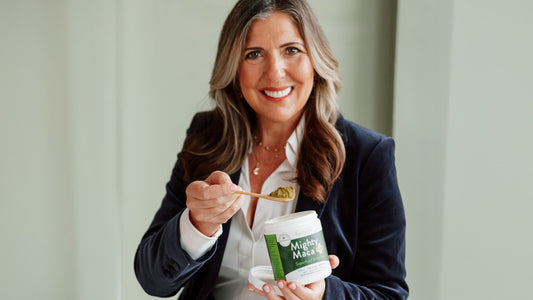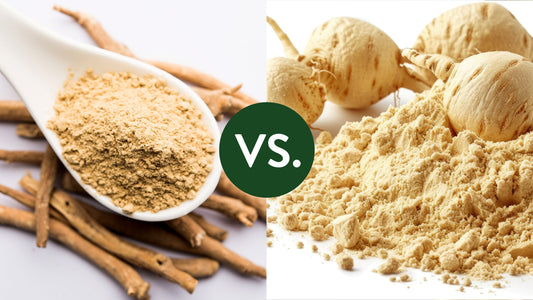Menopause is a transformative period in a woman’s life, often accompanied by challenges that impact physical health, emotional well-being, and sexual vitality. As a physician committed to empowering women through this journey, I am excited to share insights from Dr. Rachel Rubin’s groundbreaking lecture at Harvard’s Women’s Health and Menopause course. Her expertise sheds light on the benefits of testosterone therapy and vaginal DHEA, two underutilized yet highly effective treatments for menopausal symptoms.
Understanding Menopause and Its Impact on Anatomy
Menopause unfolds in three distinct stages: perimenopause, menopause, and postmenopause. During this transition, estrogen levels can plummet by as much as 90%, leading to significant changes in the anatomy of the vagina, vulva, and pelvic floor. These changes are collectively referred to as Genitourinary Syndrome of Menopause (GSM), which affects more than half of postmenopausal women[1][3].
Key Anatomical Changes:
- Thinning Vaginal Tissue: The vaginal walls lose their elasticity and thickness, resulting in dryness and discomfort during sex[1][5].
- Reduced Blood Flow: Low estrogen diminishes blood flow to the vulva and vaginal tissues, causing itching, irritation, and painful sexual penetration[3][5].
- Pelvic Floor Weakness: Hormonal changes weaken pelvic floor muscles, leading to urinary incontinence, bladder dysfunction, and pelvic organ prolapse[3].
- Altered Vulvar Appearance: The labia minora may shrink or thin out due to tissue volume loss[3].
These changes not only affect physical comfort but also disrupt sexual health and emotional well-being. Addressing these symptoms requires a holistic approach that includes hormonal therapies tailored to individual needs.
For those seeking a natural way to restore vaginal health, I often recommend Julva®, my specially formulated DHEA cream. It’s designed to nourish vaginal tissue and alleviate discomfort caused by GSM.
The Role of Vaginal DHEA in Menopausal Care
Vaginal DHEA (dehydroepiandrosterone) is emerging as a powerful option for managing GSM symptoms. Unlike systemic hormone therapies, vaginal DHEA works locally to improve tissue health without significantly altering systemic hormone levels—a critical factor for safety[5].
Dr. Rachel Rubin emphasizes its transformative potential:
“Vaginal hormones like estrogen and DHEA are the building blocks of protecting you from urinary tract infections. They improve lubrication, arousal, orgasm, and even urinary urgency and frequency. These therapies are safe and effective and should be offered to every woman over 45 experiencing GSM symptoms.”
Benefits of Vaginal DHEA:
- Improves vaginal elasticity and lubrication.
- Strengthens urethral muscles, reducing stress incontinence[5].
- Enhances tissue health without systemic absorption risks[7].
- Alleviates vulvar pain and discomfort associated with GSM[5].
For women hesitant about traditional estrogen therapy or those with contraindications (e.g., breast cancer survivors), vaginal DHEA offers a safe alternative that addresses both physical discomfort and sexual health.
If vaginal dryness, irritation, or discomfort has impacted your life, consider exploring Julva® as a natural solution. You deserve to feel comfortable and confident in your body.
Testosterone: The Unsung Hero of Menopausal Health
Often misunderstood as a “male hormone,” testosterone is actually the most abundant biologically active hormone in women during their reproductive years. Produced by the ovaries, adrenal glands, and brain, testosterone plays a crucial role in libido, energy levels, cognitive function, muscle mass, bone strength, and mood regulation[2][4][6].
Why Testosterone Declines Matter:
During perimenopause and menopause, testosterone levels gradually decline. While this drop isn’t as precipitous as estrogen loss, it has profound effects on sexual desire, muscle strength, energy levels, and overall well-being[2][4].
Dr. Rubin highlights its importance:
“You are all testosterone-driven beings—you have more testosterone than estrogen in your bodies. It’s not just about libido; testosterone impacts muscle strength, mood stability, cognitive clarity, and even pelvic floor health.”
Benefits of Testosterone Therapy for Women
Testosterone therapy offers a range of benefits that extend far beyond sexual health:
1. Improved Libido and Sexual Function: Testosterone enhances sexual desire, arousal, pleasure, orgasm quality, and self-image[4][6].
2. Enhanced Mood and Cognition: It regulates serotonin uptake in the brain while stimulating dopamine release—key neurotransmitters responsible for mood elevation and mental clarity[4][6].
3. Muscle Mass and Bone Density: Testosterone strengthens muscles and bones while improving recovery after physical activity[2][4][6].
4. Energy Boost: Women report increased stamina both physically and mentally after starting testosterone therapy[8].
5. Pelvic Floor Health: Testosterone strengthens pelvic floor muscles, reducing urinary incontinence and supporting bladder function[3][4].
Practical Application: How Vaginal DHEA and Testosterone Are Used
Dr. Rubin provides actionable guidance for prescribing these therapies effectively:
Vaginal DHEA
FDA-approved vaginal DHEA products like Intrarosa can be used daily to alleviate GSM symptoms such as dryness or pain during intercourse. For localized vulvar pain or vestibular discomfort (the sensitive tissue at the vaginal opening), compounded creams containing low doses of estrogen (0.01%) combined with testosterone (0.1%) may be applied directly to affected areas[7].
Testosterone Therapy
Testosterone gel or cream is prescribed at microdoses tailored for women—typically 1% formulations applied daily to areas like the calf or inner thigh. Dr. Rubin advises patience with this therapy: “Testosterone takes time—about four to six months—to click fully into place.” She also emphasizes shared decision-making with patients to address concerns about side effects like acne or hair growth.
For a natural energy and hormone boost, I often recommend Mighty Maca® Plus, a superfood blend designed to support hormonal balance, energy levels, and overall vitality.
Advocacy for Accessible Care
Despite its proven benefits, testosterone remains underutilized due to regulatory hurdles—classified as a Schedule III controlled substance—and limited availability of female-specific formulations[2][6]. Dr. Rubin advocates for change: “We need more research to get testosterone approved for women—it’s not that scary.”
Additionally, she calls on clinicians to listen closely to patients’ lived experiences with these therapies:
“Just try it with patients who are symptomatic—listen to them after six months; you’ll hear how much better they feel.”
Empowering Women Through Science
The menopause journey doesn’t have to be defined by discomfort or loss of vitality. With emerging treatments like vaginal DHEA and testosterone therapy backed by robust data from clinicians like Dr. Rubin[6], we have the tools to transform menopausal care.
As Dr. Rubin eloquently states:
“We are better together when we look at this from different angles… Women deserve better options for their health.” Let’s continue advocating for accessible solutions that honor every woman’s unique needs.
Have you tried vaginal DHEA or testosterone therapy? Share your experiences below—we’d love to hear from you!
Sources:
1. Vaginal Changes During Menopause - Everyday Health
2. Testosterone for Menopause: How This Hormone Can Help Women
3. All the ways your vagina changes during menopause - New York Post
4. The importance of testosterone for women - balance menopause
5. Vaginal Atrophy: Causes, Symptoms, Diagnosis & Treatment
6. Should we be prescribing testosterone to perimenopausal
7. Vaginal Changes During Menopause - Breastcancer.org
8. Testosterone and the Menopause



